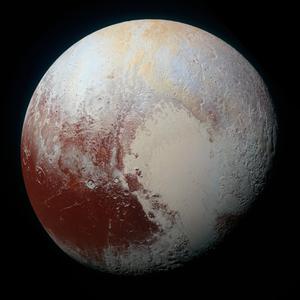Glossary term: Planeta enano
Description: Un planeta enano es un cuerpo celeste con las siguientes propiedades: Orbita alrededor del Sol, tiene masa suficiente para obtener una forma casi redonda, no ha despejado su trayectoria a lo largo de su órbita, y no es una luna. Los planetas enanos suelen orbitar en regiones formadas por cuerpos similares, como es el caso del cinturón de asteroides y el cinturón de Kuiper. En general, los planetas enanos son más pequeños que Mercurio, con estructuras heladas y rocosas. La cantidad de hielo respecto a las rocas depende de su posición en el Sistema Solar. Plutón es el planeta enano más famoso. El término planeta enano no debe confundirse con el término obsoleto de planeta menor.
Related Terms:
- Asteroid
- Asteroid Belt
- Kuiper Belt
- Minor Planet
- Pluto
- Trans-Neptunian Object
- Small Solar System Body
See this term in other languages
Term and definition status: The original definition of this term in English have been approved by a research astronomer and a teacher The translation of this term and its definition is still awaiting approval
The OAE Multilingual Glossary is a project of the IAU Office of Astronomy for Education (OAE) in collaboration with the IAU Office of Astronomy Outreach (OAO). The terms and definitions were chosen, written and reviewed by a collective effort from the OAE, the OAE Centers and Nodes, the OAE National Astronomy Education Coordinators (NAECs) and other volunteers. You can find a full list of credits here. All glossary terms and their definitions are released under a Creative Commons CC BY-4.0 license and should be credited to "IAU OAE".
Related Media
Pluto
Credit: NASA/Johns Hopkins University Applied Physics Laboratory/Southwest Research Institute credit link
License: PD Public Domain icons
Ceres
Credit: NASA / JPL-Caltech / UCLA / MPS / DLR / IDA / Justin Cowart
License: CC-BY-2.0 Creative Commons Atribución 2.0 Genérica icons










